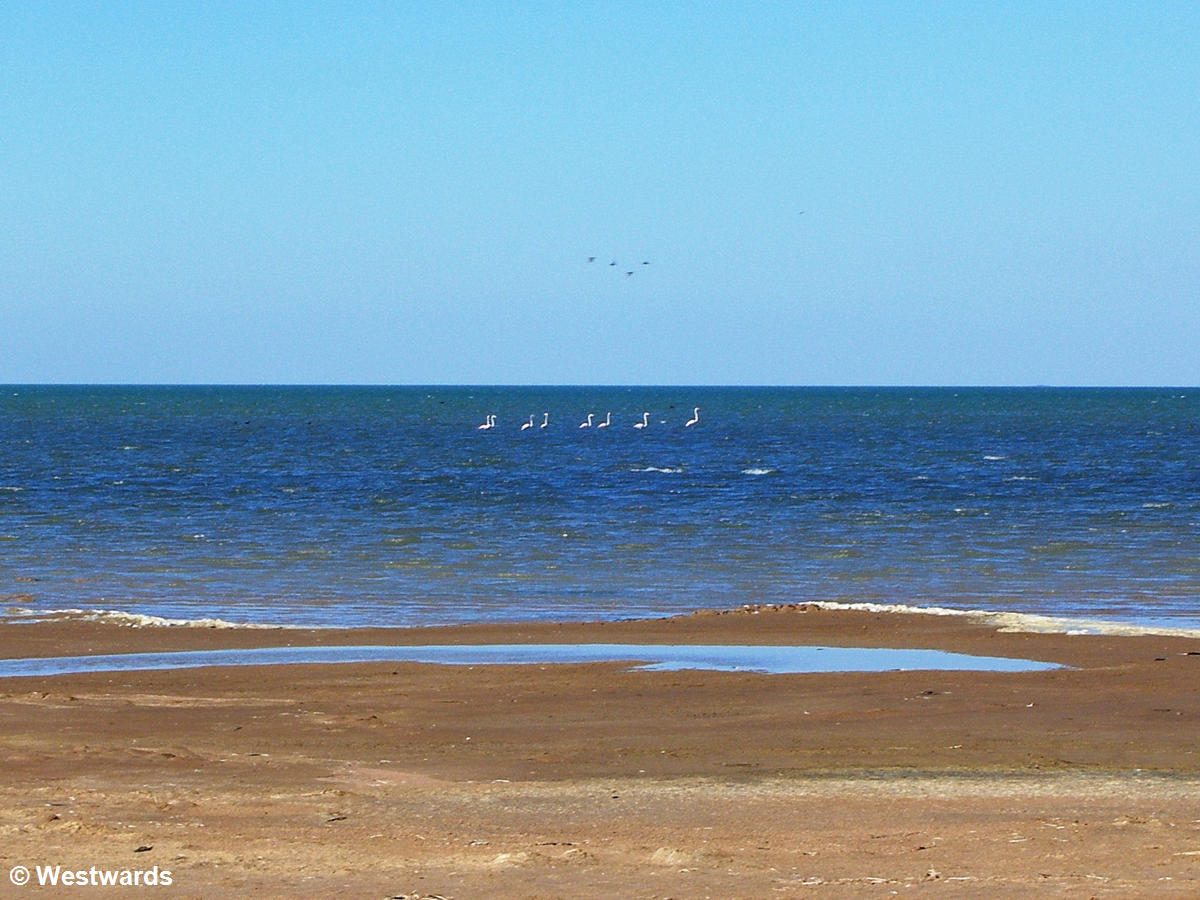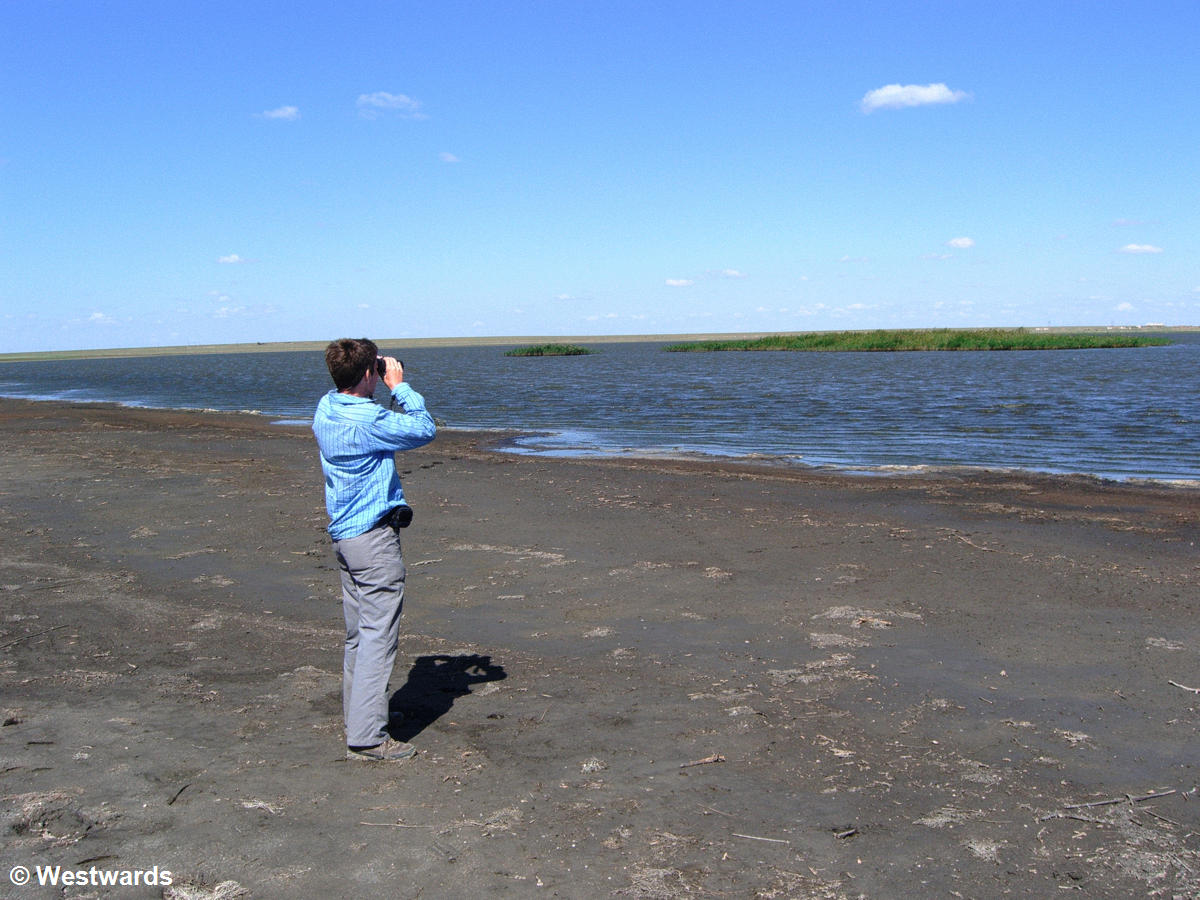
“Welcome,” shouts a girl’s voice into the microbus when we arrive in Korgalzhyn, the nearest village to Lake Tengiz. Saika and her mother Bibi Nur have been waiting to pick us up from the minibus stop as there are no street names or house numbers in the village.
Bibi Nur and her family are taking part in a tourism development project designed to enable visitors to see the extensive wetlands around Korgalzhyn, which are home, stopover points or breeding grounds to about 300 species of birds, many of them migratory. In 2008, nearly 500,000 ha of steppe and wetland were declared a UNESCO World Natural Heritage for the diversity of the birds to be found here – as some of the lakes have fresh water and others salt water, it is an ideal place for all birds to rest. For tourists, however, the infrastructure is quite limited.

Bird-watching with Timur
Timur is an experienced bird-watching guide: He is our Jeep driver whom Bibi Nur has arranged to bring us to Lake Tengiz. The largest of the salt lakes is an hour’s drive from Korgalzhyn, and it is popular with pink flamingos, too. Half-way to the lake, the car suddenly stops in the steppe. At first we worry about the Jeep, which seems rather dilapidated, but Timur is gazing ahead and grunts “Adlerbussard” (long-legged buzzard) in German. He has often worked with German NGO staff. Presently we see the majestic bird land quite close to us.
Lake Tengiz, when we finally arrive there, is, well, huge. The pink flamingos come here every year, it is their northernmost breeding ground. The challenge is to find them on the more than 1000 km² surface of the lake. Timur also has to stop the car at the right distance to be unobtrusive to the shy birds.

Today, we are lucky (or Timur gets it right), and we can stare through his huge green army binoculars at a group of several hundred pink birds, all standing on one leg in the shallow water.
Timur then succeeds in finding another group of flamingos and a couple more unusual birds (they would have been more impressive to keen bird-watchers, we assume).
We do get tired of bird-watching after a few hours, however, and are glad to come home to Bibi Nur’s hospitality. With warm sweet Baursaki (a yeast pastry) and kumys (mildly alcoholic fermented mare’s milk) in the yurt that the family have put up in their garden as a reminder of old nomadic traditions.

Bibi Nur’s yurt 
Korgalzhyn cemetery
Why visit Lake Tengiz and the Saryarka region?
Even if you are not an avid bird-watcher you will probably enjoy the vast size of the steppe in Northern Kazakhstan. The homestay programme organized by Ecotourism Kazakhstan is a great way to experience typical village family life and at the same time support the locals.
How to get to Korgalzhyn and Lake Tengiz
Korgalzhyn is about 120 km southwest from Kazakhstan’s capital Astana; there’s a regular bus from Astana. Ecotourism Kazakhstan has up-to-date information and can also arrange transfers: http://www.eco-tourism.kz/korgalzhyn_e.html
Astana itself has relatively good airline connections to Russia and Europe. However, it is more than 1000 km away from Almaty and the main tourist sites along the Silk Road.
We have published an article (in German) in some German and Austrian newspapers. Read it here



